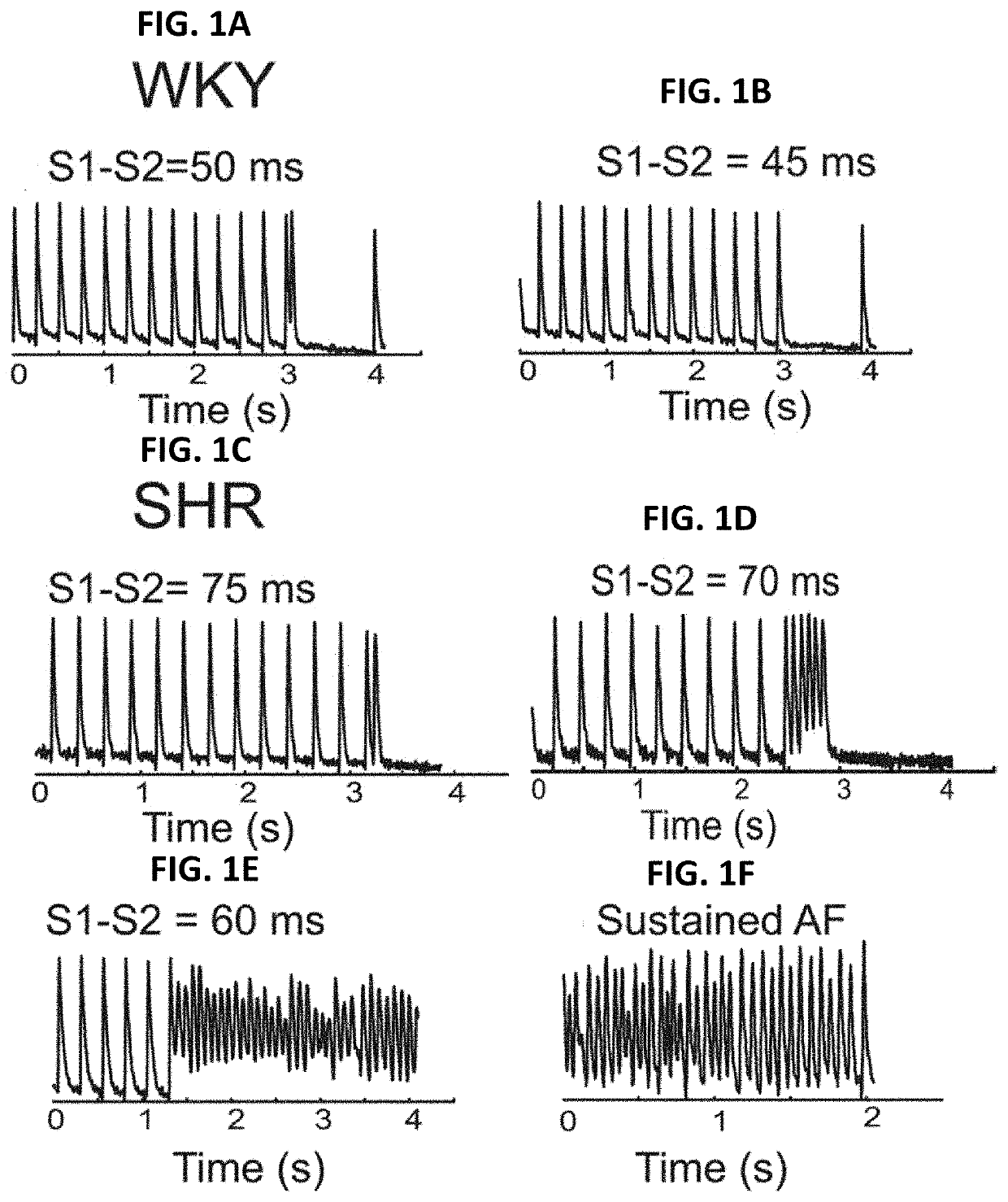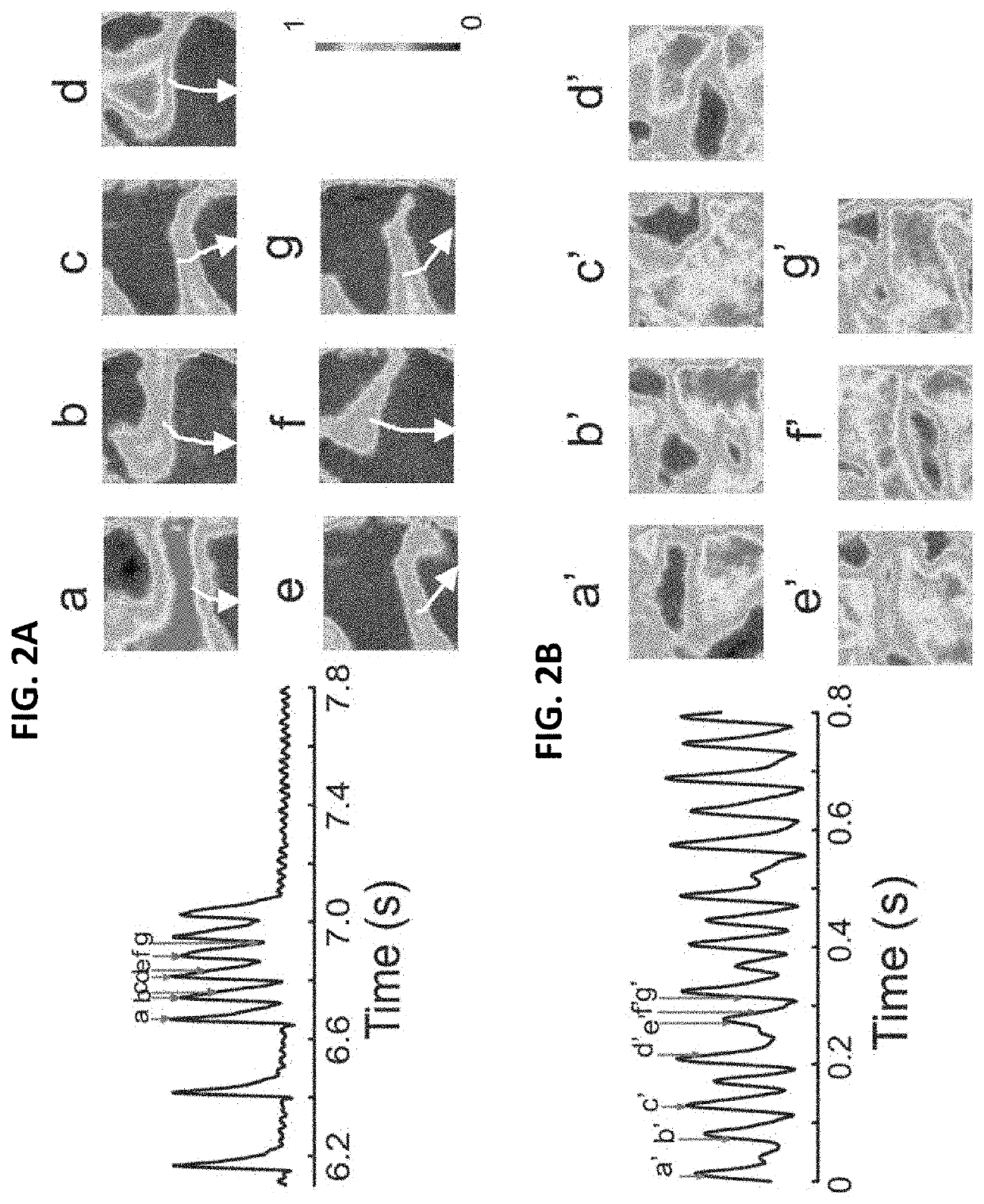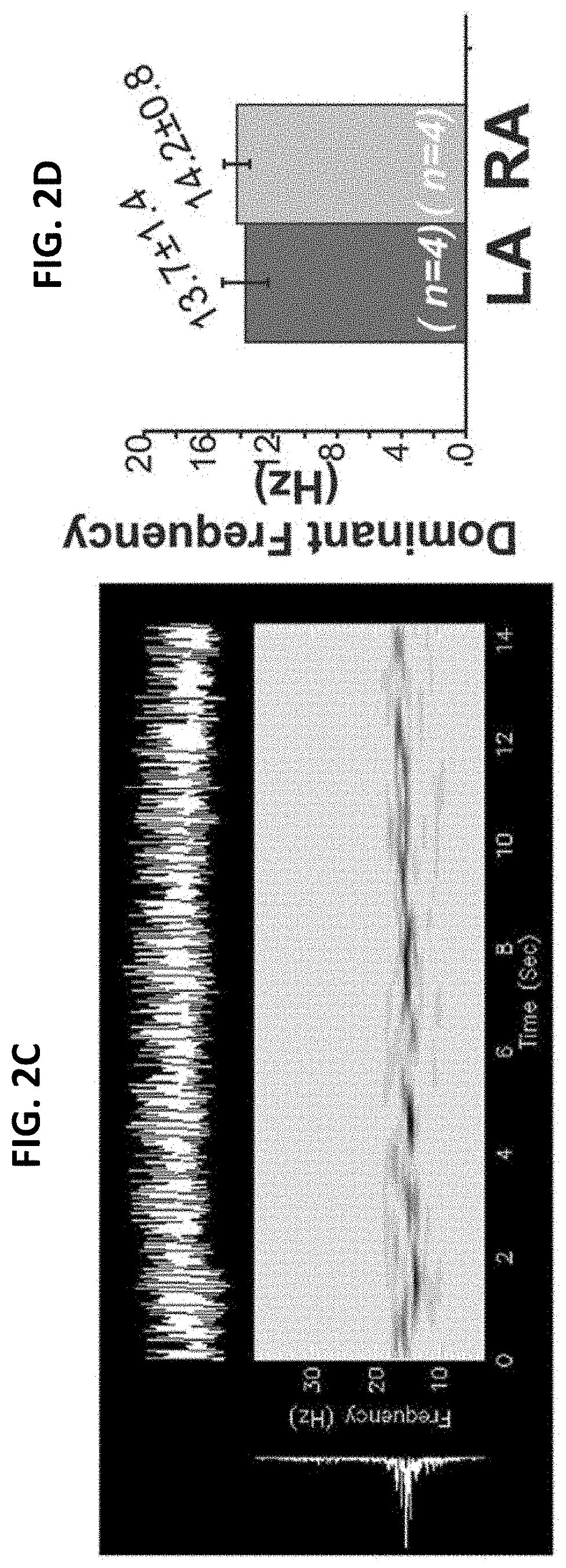Use of relaxin to treat atrial fibrillation
a relaxin and atrial fibrillation technology, applied in the direction of hormone peptides, drug compositions, peptide/protein ingredients, etc., can solve the problems of increasing the risk of serious complications, limited effectiveness of existing anti-arrhythmic drug approaches, and generating a significantly greater increase in atrial fibrillation
- Summary
- Abstract
- Description
- Claims
- Application Information
AI Technical Summary
Benefits of technology
Problems solved by technology
Method used
Image
Examples
example 1
[0163]RLX suppresses atrial fibrillation by reversing fibrosis and myocyte hypertrophy, and increasing conduction velocity and sodium current in spontaneously hypertensive rat hearts
Abstract
[0164]Rationale: Atrial fibrillation (AF) contributes significantly to morbidity and mortality in elderly and hypertensive patients and has been correlated to enhanced atrial fibrosis. Despite a lack of direct evidence that fibrosis causes AF, reversal of fibrosis is considered as a plausible therapy.
[0165]Objective: To evaluate the efficacy of the anti-fibrotic hormone RLX at suppressing AF in spontaneously hypertensive rats (SHR).
[0166]Methods and Results: Normotensive Wistar Kyoto (WKY) and SHR were treated for 2-weeks with vehicle (WKY+V and SHR+V), or RLX (0.4 mg / kg / day, SHR+RLX) using implantable mini-pumps. Hearts were perfused, mapped optically to analyze action potential durations (APDs), intracellular Ca2+-transients, restitution kinetics (RK) and tested for AF vulnerability. SHR hearts...
example 2
Treatment of Atrial Fibrillation in a Human Subject
[0210]This example describes a particular method that can be used to treat atrial fibrillation in a human subject by administration of one or more RLX polypeptides including an amino acid sequence of mature RLX, or a precursor of mature RLX, wherein the amino acid sequence has up to four amino acid substitutions, wherein the polypeptide specifically binds the RLX receptor; or a nucleic acid molecule encoding the polypeptide, to treat a subject with atrial fibrillation. Although particular methods, dosages, and modes of administrations are provided, one skilled in the art will appreciate that variations can be made without substantially affecting the treatment.
[0211]Based upon the teaching disclosed herein, atrial fibrillation, such as first detected, paroxysmal, persistent or chronic atrial fibrillation, can be treated by administering a therapeutically effective amount of a RLX polypeptide thereby inhibiting atrial fibrillation.
[02...
PUM
| Property | Measurement | Unit |
|---|---|---|
| time | aaaaa | aaaaa |
| Time- | aaaaa | aaaaa |
| Tm | aaaaa | aaaaa |
Abstract
Description
Claims
Application Information
 Login to View More
Login to View More - R&D
- Intellectual Property
- Life Sciences
- Materials
- Tech Scout
- Unparalleled Data Quality
- Higher Quality Content
- 60% Fewer Hallucinations
Browse by: Latest US Patents, China's latest patents, Technical Efficacy Thesaurus, Application Domain, Technology Topic, Popular Technical Reports.
© 2025 PatSnap. All rights reserved.Legal|Privacy policy|Modern Slavery Act Transparency Statement|Sitemap|About US| Contact US: help@patsnap.com



